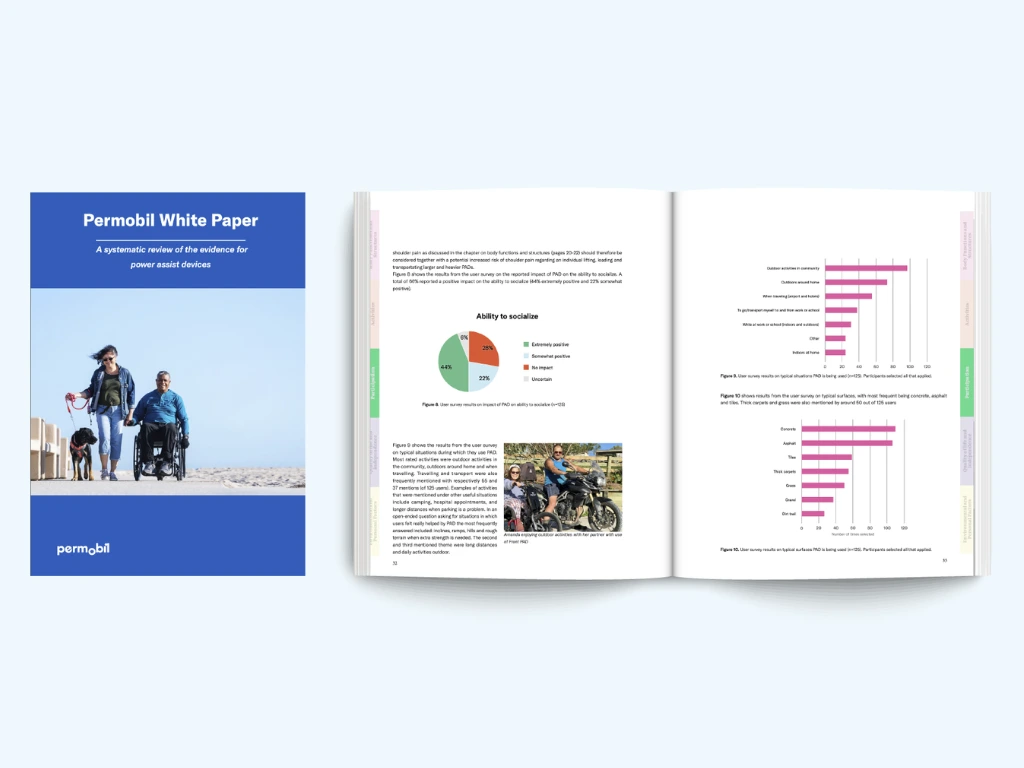- Clinical Research
- Research Library
- Scientific Publication: Effects of the SmartDrive on mobility, activity, and shoulder pain among manual wheelchair users with spinal cord injury - a prospective long-term cohort pilot study
Scientific Publication: Effects of the SmartDrive on mobility, activity, and shoulder pain among manual wheelchair users with spinal cord injury - a prospective long-term cohort pilot study

New collaborative research publication on SmartDrive performed in Sweden shows that people with spinal cord injury deemed it is as reliable and easy to use. The device increased the participants’ independence, ability to move freely outdoors and participation in desired activities.
This study was performed at a Swedish Rehabilitation Center (Spinalis). Six adults with a spinal cord injury who were evaluated for a SmartDrive (MX2+: rear power assist device) prescription, used the SmartDrive for six months and evaluations were done before and after receiving the power assist and after 6 months. The primary reason for the prescription of the SmartDrive was shoulder pain. Other reasons included to be able to go further distances and to independently transfer the power assist device into the car.
Results show that persons were overall satisfied with the SmartDrive: “It is not possible to describe how good it is, it is absolutely fantastic”. Furthermore, persons reported on feelings of self-confidence, increased independence, less need of planning the route when going for walks, reduced avoidance of slopes, and increased ability to manage long and steep slopes and longer distances. With the SmartDrive all persons improved their satisfaction with going for walks. Analyses from the Smartwatch showed that the majority of time was spent without pushing or in very low push activity intensity levels (0-4 pushes/minute), both before and after having a SmartDrive.
Although there were large variations in pain between persons, findings from a pain diary suggest that some persons experienced decrease in pain, pain intensity, and pain interference. Two decreased their use of pain medication after using the SmartDrive. Those who did not experience reduced pain commented that there was a reduced impact of their shoulder pain, even though the pain was there they could still do desired activities. It also gave a sense of security that they would be able to go back home even if pain arose.
After six months of use, all persons agreed that SmartDrive increased their independence, their ability to move freely outdoors, and their participation in desired activities. They further agreed that SmartDrive was safe to use, easy to use and reliable. Assistance needed to use the SmartDrive showed lower scores of satisfaction, with all persons reporting that the SmartDrive was heavy to handle, and only one person was able to mount/dismount the device while sitting in the wheelchair but preferred to ask for help when available. Persons stated that they did not notice the extra weight of the SmartDrive on their wheelchairs when the motor was switched off. Four out of six persons could lift the SmartDrive in and out of the car.
